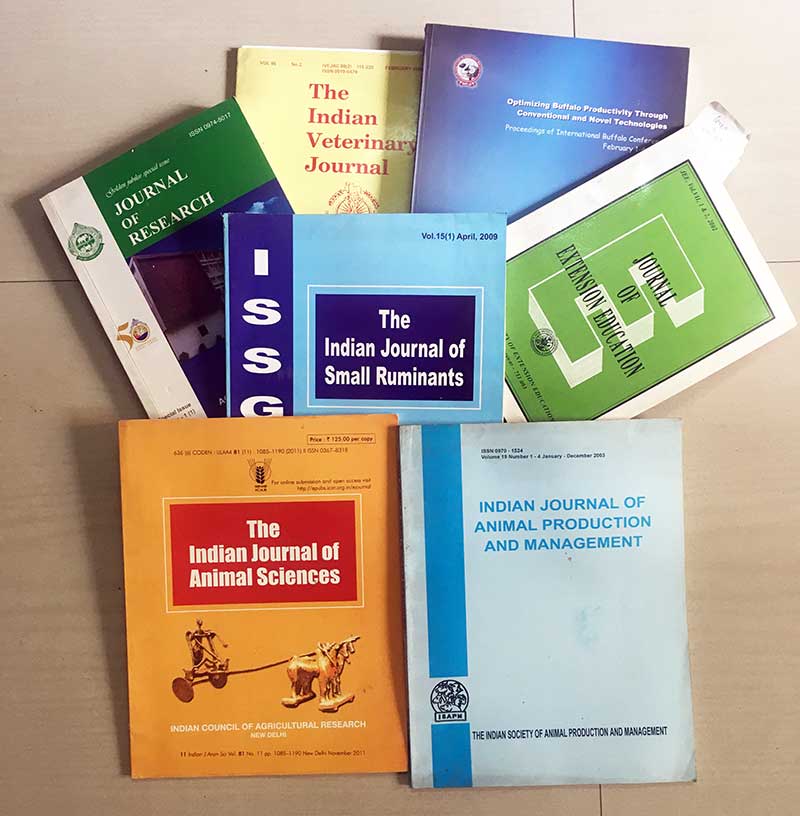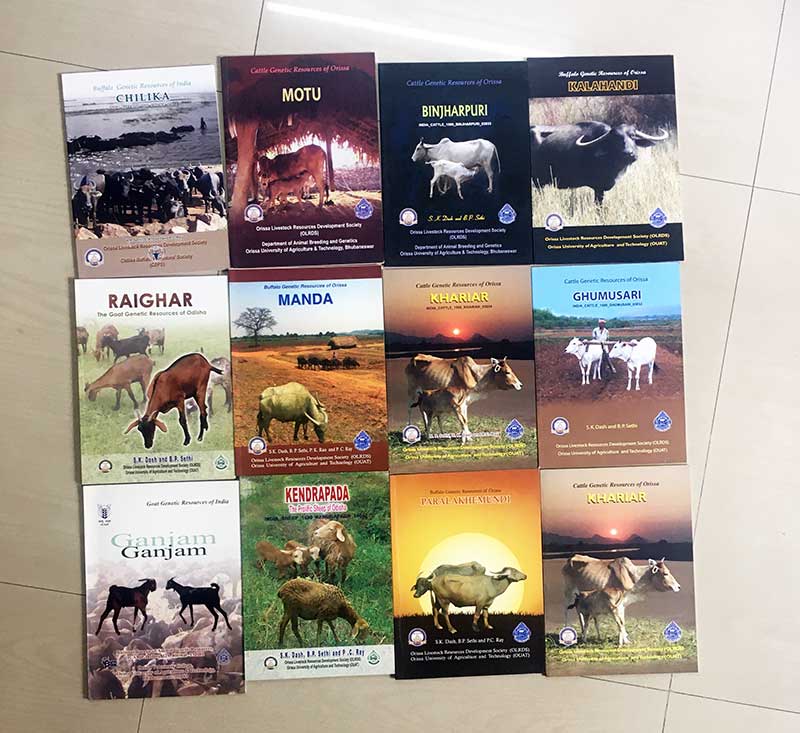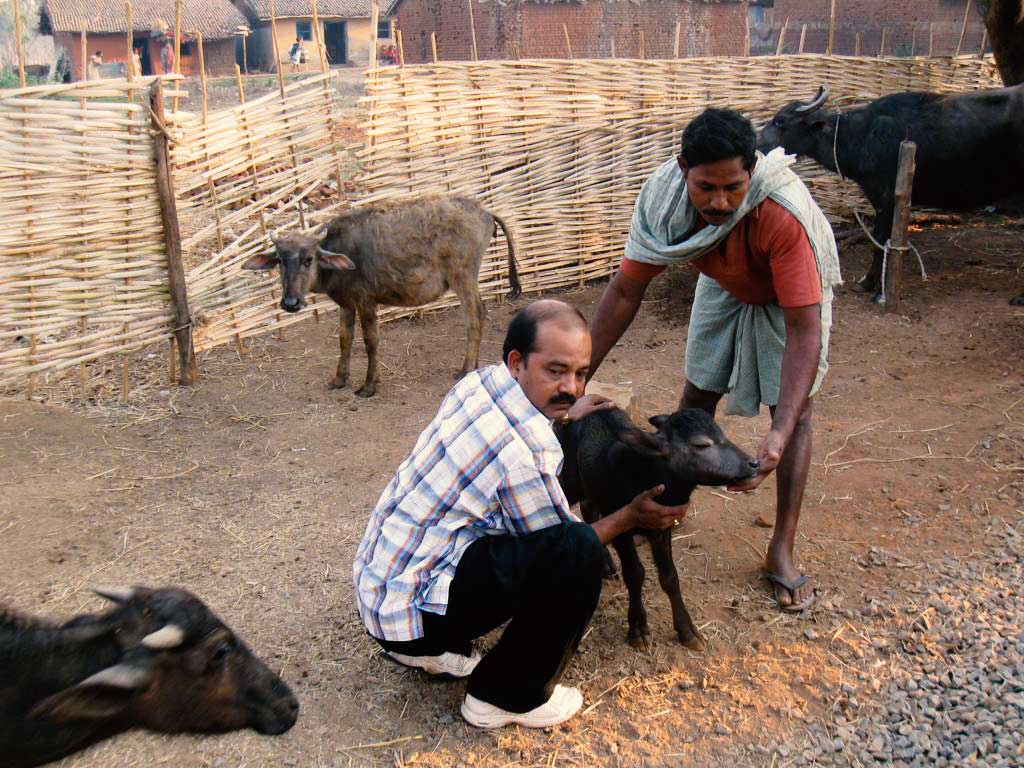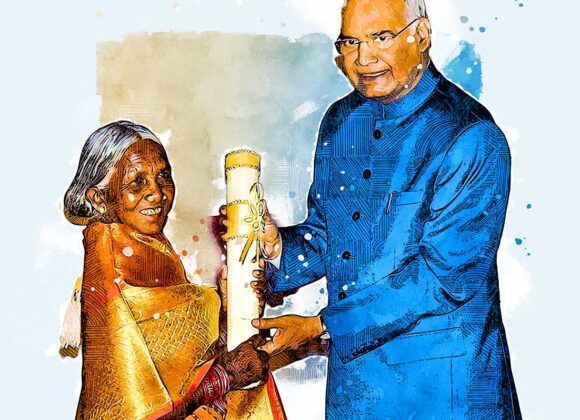The survivability of any species depends upon the adaptability of a species to its biome. Marking up and registering the native breeds not only depicts the animal diversity of a region but also leads to its protection. For this, Dr Sushant Kumar Dash has been investigating the native livestock breeds of Odisha as an animal geneticist for the last two decades. The efforts have helped Odisha register 8 of its native breeds and secure their Intellectual Property (IP) rights.
Dr Dash hails from Madhapur village in the Dhenkanal District of Odisha. He has been working as a professor in the Animal Breeding and Genetics at Odisha University of Agricultural Technology (OUAT) since 1991. Currently he is positioned as the HOD in Poultry science.
“During my Post-grad, I learned that beyond thirty native cattle and eleven buffalo breeds in total, no other breed from India got registered in the national level since post-independence. As only one cattle species from Andhra Pradesh, Ongole listed up from eastern India, I was a bit nosy why other livestock breeds (if any) have not been researched upon and registered?”
He was hunting any clue to take up research work on indigenous breeds of Odisha that could also preserve their population with funds allotted from ICAR and the state government. In 2005-06, his conviviality with IAS officer Shri Bishnupada Sethy (the then-chief of Directorate of Animal Husbandry and Veterinary Services) unfolded the scope to conduct several surveys and studies on unique traits. As a result, he professed four native cattle breeds of Odisha for the 1st time at the national level in 2010.
- Bhinjarpuri in Jajpur region
- Motu of Malkangiri and Koraput
- Kharia of Nuapada
- Ghumusari of Ganjam, Phulbani and Boudh region
Simultaneously, Dash also discovered a native buffalo- Chilika Buffalo near the Chilika lagoon and Brahmagiri region that registered as the 12th species. The Kalahandi buffalo and Manda buffalo of Koraput were enlisted as the 13th and 19th breed in 2012 and 2021 respectively. A breed of Poultry birds- the Hensley hen of Mayurbhanj has also been registered in the list.
Certainly, the surveys take a great time and dedication to identify and register a native breed. Dr Dash himself visits the location with the team of the Animal Resource Development Department of Odisha, OUAT. As per the parameters of breed descriptor, they survey at least 300 animals approximately for 300 days to inspect the physical changes in both male and female. They record comprehensive physical features of animals, color and their habitation, insemination cycle; number of birth per delivery, the period between two gestations; common diseases and its cure etc… They collect major chunk of data from farmers and local veterinary hospitals.
Manda buffaloes have ash grey animals with copper colour hair. They are resistant to parasitic infection and diseases; and can live, reproduce in meagre resources. These buffaloes mature at around three years and deliver a calf in every 1.5 to 2 years for the whole life of around 20 years.
Further, the Indian Institute of Science (IIS) in Bengaluru also aids in analyzing the unique genome sequencing of the species. For example, the presence of a unique gene called Fec-B in Kendrapara Sheep (generally found in the coastal belt of Konark to Chandabali), allows the reproduction of multiple offspring. The 2016 enlisted species possess the highest per cent of parturition at once i.e. around 71% of offspring are twins, 7% are triplets and even 1% of the species reproduce quadruplets. Likewise, the team sends application for registration with all records of the animal to the Indian Council of Agricultural Research (ICAR) – National Bureau of Animal Genetic Resources. After proper scrutiny, the native species get an accession number that grants for enlistment and funds for conservation of species.
Breed registration is important for documenting the animal genetic resource. This can help for genetic improvement and conservation.
Indigenous livestock have adaptability to the local conditions and low input system of management. In today’s changing climate, native breeds are more resistant to diseases and can withstand parasitic loads better compared to exotic breeds. Like, Manda are used for ploughing and in agricultural operations in southern Odisha. Moreover, the preservation of local genres is necessary as their genes are the foundation of any transgenic breed like Jersey and Holstein. In case of Chilika buffalo, its milk is rich in Omega 3 fatty acid. Its high-fat content can preserve curd at room temperature for 7 days. So, if conserved properly, such native breeds can support the livelihood of dairy farmers.
Currently, Dr Dash is examining two native breeds – Ghumusari and Raigarh goats for registration. He is also planning to research upon indigenous species of goats, pigs, and ducks shortly.


In the era of rapid deteriorating resources, we can neither remain entirely dependent on hi-tech tools nor transgenic breeds. Instead, we can opt for strategies to amplify the productivity of local livestock by applying selection and breeding methods among the productive animals of the species. We cannot neglect the unique characteristics of local animals and their endurance against the ill effects of changing the environment. The government can play an integral role in promoting awareness among farmers of all classes to bring the local breeds into use. Further, allocating funds for such examen in our country can boost morale our geneticist.





